Python Learning Notes (8) - Programming Design Methodology
1. Effective solutions to complex problems
1. Top-down:

2. From bottom to top:

2. Computing Thought and Programming
1. Computational thinking:
1.1 Logical thinking:
1.2 Positive thinking:
1.3 Computing thinking:

1.4 Differences among Three Thoughts
Examples:
eg1:
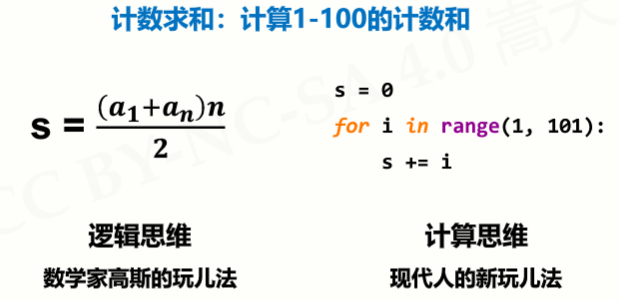
eg2:
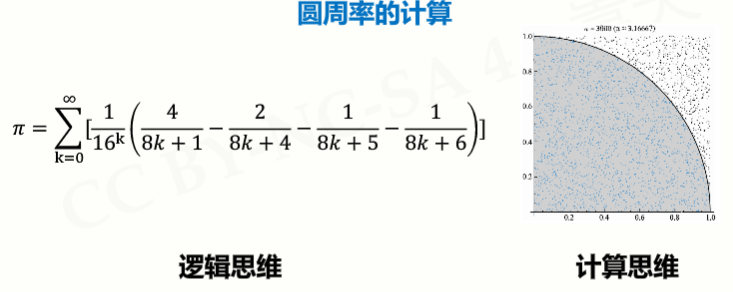
eg3:
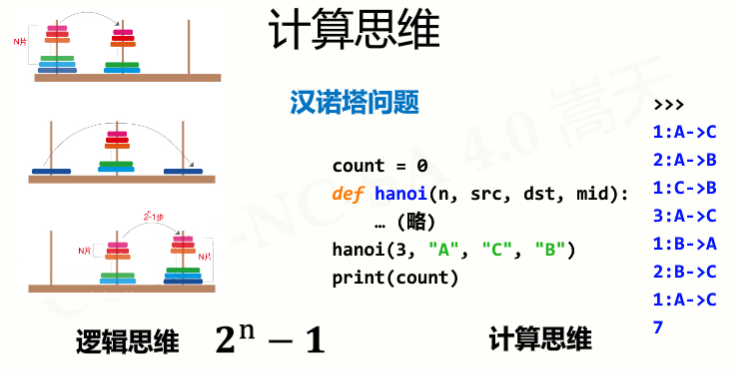
eg4:

eg5:
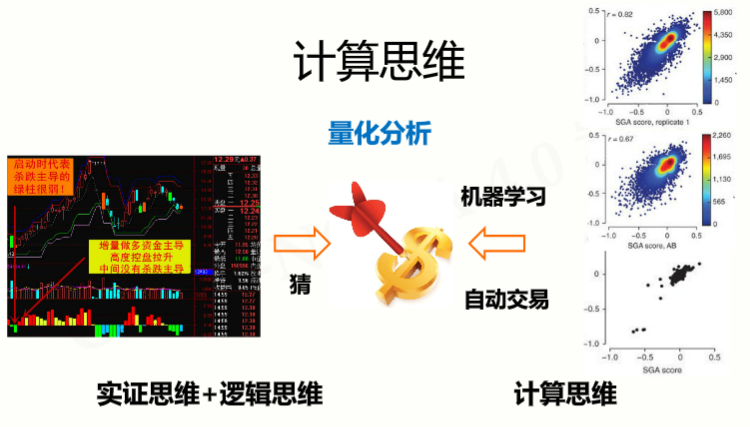
1.5 Computing Thinking and Programming

3. Computing Ecology and Python Language
1. Computational Ecology:


2. Computing Ecology and Python Language


3. Calculating the Value of Ecology

IV. User Experience and Software Products
1. Implement Functions - > Focus on Experience

2. Ways to improve user experience
2.1 Progress Show

2.2 Exception handling

2.3 Other methods

5. Basic Programming Modes
1. Introduction to IPO:

2. Steps:

3. Basic design patterns:
3.1 Top-down design:
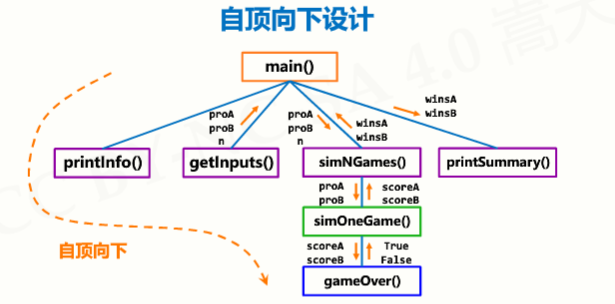
3.2 Modular design:


3.3 Configurable design:

4. Steps for application development: from application requirements to software products


6. Examples: Sports Competition
1. Overall Program Framework and Steps

2. Draw the overall framework

Stage 1: Functions:
2.1 main() function
def main(): printIntro() probA, probB, n = getInputs() winsA, winsB = simNGames(n, probA, probB) printSummary(winsA, winsB)
2.2 printInfo() function: introductory content to improve user experience
def printIntro(): print("This program simulates two players A and B Of some kind of competition") print("Program Running Requirements A and B Ability value (expressed as a decimal number between 0 and 1)")
2.3 getInputs() function
def getInputs(): a = eval(input("Please enter a player A Ability Value(0-1): ")) b = eval(input("Please enter a player B Ability Value(0-1): ")) n = eval(input("Number of simulated matches: ")) return a, b, n
2.4 printSummary() function)
def printSummary(winsA, winsB): n = winsA + winsB print("Athletic analysis started, total simulation{}Game".format(n)) print("Player A Win victory{}Game, proportions{:0.1%}".format(winsA, winsA/n)) print("Player B Win victory{}Game, proportions{:0.1%}".format(winsB, winsB/n))
Stage 2: Simulate N Games
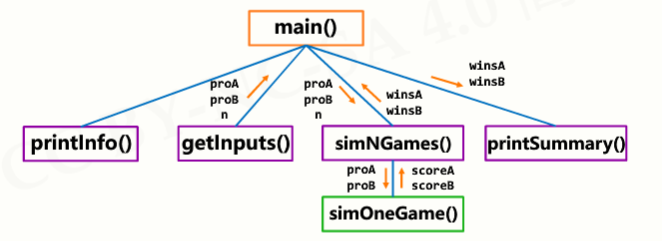
def simNGames(n, probA, probB): winsA, winsB = 0, 0 for i in range(n): scoreA, scoreB = simOneGame(probA, probB) if scoreA > scoreB: winsA += 1 else: winsB += 1 return winsA, winsB
Stage 3: Judging the end of the board by score
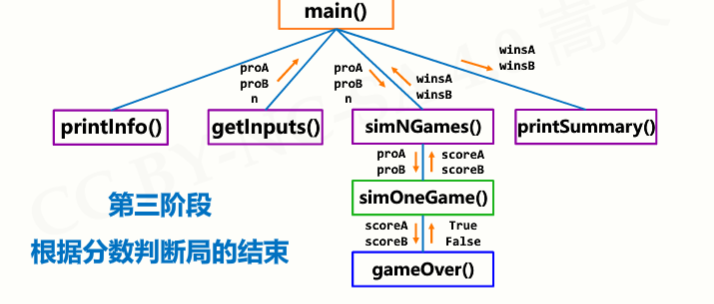
def simOneGame(probA, probB): scoreA, scoreB = 0, 0 serving = "A" while not gameOver(scoreA, scoreB): if serving == "A": if random() < probA: scoreA += 1 else: serving="B" else: if random() < probB: scoreB += 1 else: serving="A" return scoreA, scoreB
Complete code:
#MatchAnalysis.py from random import random def printIntro(): print("This program simulates two players A and B Of some kind of competition") print("Program Running Requirements A and B Ability value (expressed as a decimal number between 0 and 1)") def getInputs(): a = eval(input("Please enter a player A Ability Value(0-1): ")) b = eval(input("Please enter a player B Ability Value(0-1): ")) n = eval(input("Number of simulated matches: ")) return a, b, n def simNGames(n, probA, probB): winsA, winsB = 0, 0 for i in range(n): scoreA, scoreB = simOneGame(probA, probB) if scoreA > scoreB: winsA += 1 else: winsB += 1 return winsA, winsB def gameOver(a,b): return a==15 or b==15 def simOneGame(probA, probB): scoreA, scoreB = 0, 0 serving = "A" while not gameOver(scoreA, scoreB): if serving == "A": if random() < probA: scoreA += 1 else: serving="B" else: if random() < probB: scoreB += 1 else: serving="A" return scoreA, scoreB def printSummary(winsA, winsB): n = winsA + winsB print("Athletic analysis started, total simulation{}Game".format(n)) print("Player A Win victory{}Game, proportions{:0.1%}".format(winsA, winsA/n)) print("Player B Win victory{}Game, proportions{:0.1%}".format(winsB, winsB/n)) def main(): printIntro() probA, probB, n = getInputs() winsA, winsB = simNGames(n, probA, probB) printSummary(winsA, winsB) main()
Run result:
